Color of hydrangeas: how to change the hue of your plant's blooms
Learning how to change the color of hydrangeas in your backyard is simple – we explain all
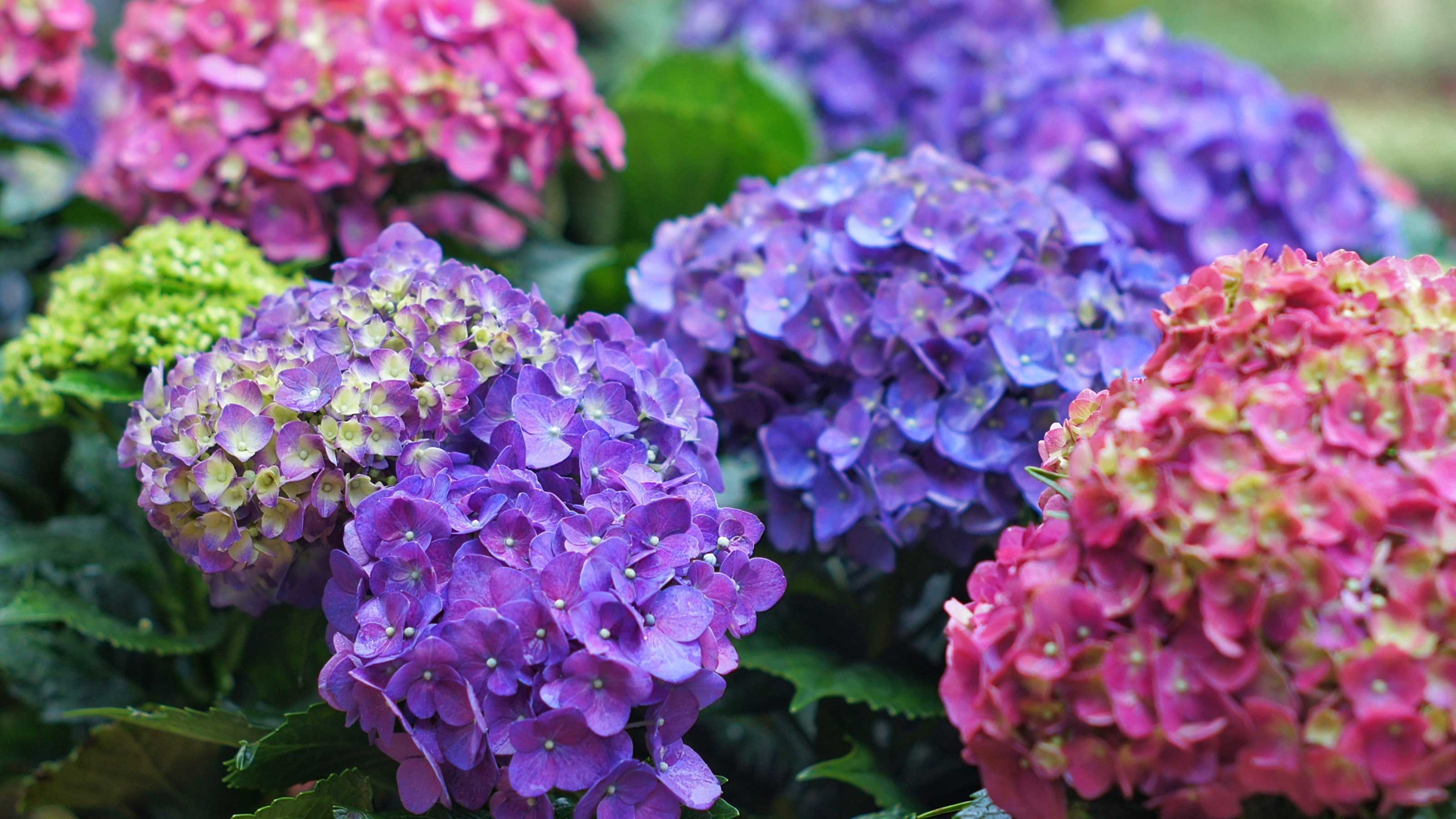

Did you know you can change the color of hydrangeas? Well, at least when it comes to mophead and lacecap cultivars of Hydrangea macrophylla, Hydrangea involucrata, and Hydrangea serrata. Maybe you want to try a new look for your shrubs. Or, perhaps you've noticed your once-blue bloomer turning pink unexpectedly and want to get it back to its former hue. Either way, the process is quite straightforward once you know how.
These plants are one of our favorite flowering shrubs for adding structure and vibrancy to a plot. What's more, learning how to grow hydrangeas is easy, so they're ideal for novice and experienced gardeners alike.
And they're not just for borders – you can plant them in containers too. In fact, changing the color of hydrangeas in containers is easier than those planted straight into the ground as you have more control over the soil. We explain everything you need to know in this simple guide.
How do you change the color of hydrangeas to suit your garden?
Hydrangeas with blue or pink flowers tend to be blue in acid soil conditions, mauve in acid to neutral soil conditions, and pink in alkaline conditions, as explains Christine, garden expert of Amateur Gardening.
This means that by changing the pH of the soil, you can achieve different hydrangea colors to complement your existing garden color scheme. Bear in mind that the color change won't happen overnight, however – it is an ongoing process.
How do you make your hydrangea blue?
Whether landscaping with hydrangeas or growing them in pots, you can maintain blue-hued blooms by acidifying the soil, explains Christine.
Try mulching with organic matter – apart from mushroom compost, which is more alkaline. 'Sulfur is also a common acidifying material, though it can take weeks to have an effect,' Christine adds. Using ericaceous compost also tends to be effective.
You can also buy "blueing" compounds from garden centers and online (try Amazon), which should be applied according to the manufacturer's instructions. These contain aluminum. Some gardeners also say adding coffee grounds to the soil can help, and the Amateur Gardening experts also suggest working bits of rusty metal into the feeding-root area.
John Negus, who writes for Amateur Gardening too, also recommends using rainwater to water hydrangeas to help keep them blue. You can collect it in a water butt – which is also a good approach if you want a more sustainable garden.
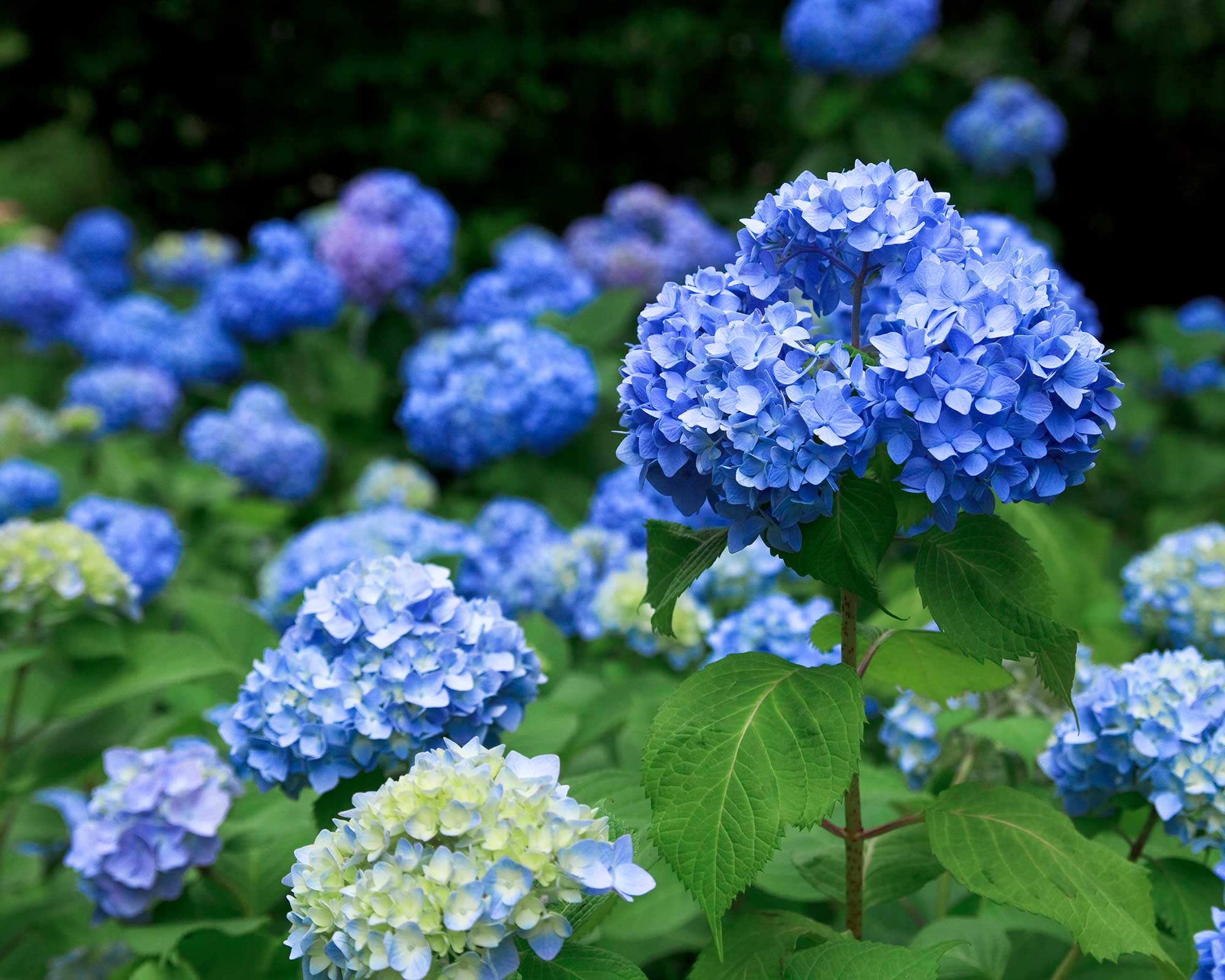
Keep the soil acidic for blue hydrangea blooms
How do you make your hydrangea pink?
Hydrangeas in neutral or chalky (alkaline) soils generally produce pink or mauve, slightly muddy-colored blooms. 'Pink blooms are caused by a relatively high pH, of around 7.5–8,' says John.
The best way to do this is to add garden lime, available on Amazon, to the soil. Follow the instructions on the pack of your chosen product, but 1/2 cup per 10 square feet once every couple of weeks during the growing season should be effective.
Adding wood ash to the soil around your hydrangeas can also help to increase its alkalinity – a useful tip for those who have invested in one of the best fire pits for their plot.
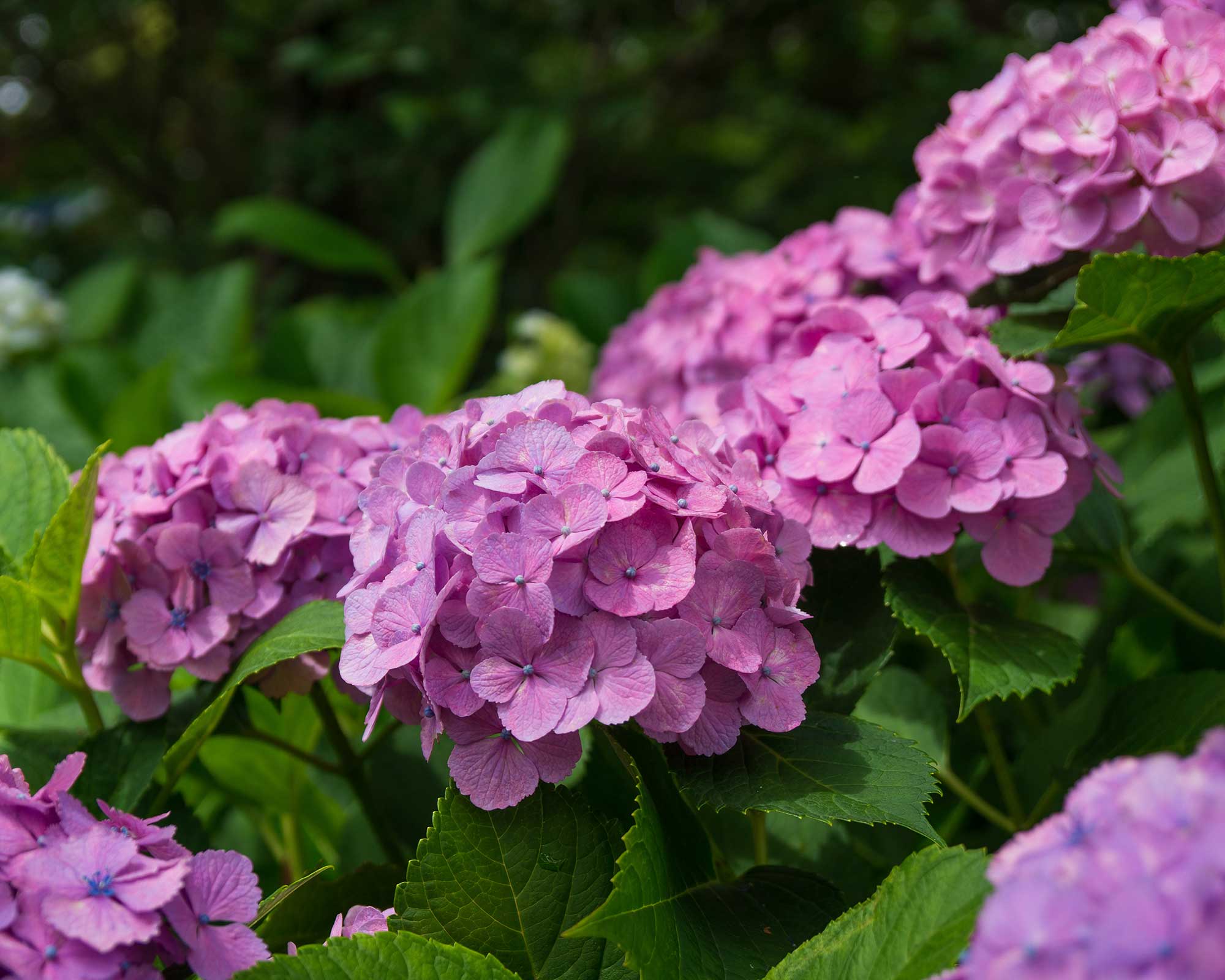
Alkaline soils will encourage pink hydrangea flowers
Why are some of my hydrangea's flowers blue and some pink?
It is quite unusual to have hydrangeas that have both pink and blue blooms, but it can happen. The reason behind this is generally because there are pockets of acidity within the plant's root area.
To have more control over the soil, you may want to try planting your hydrangea in large pots as part of your container gardening ideas.
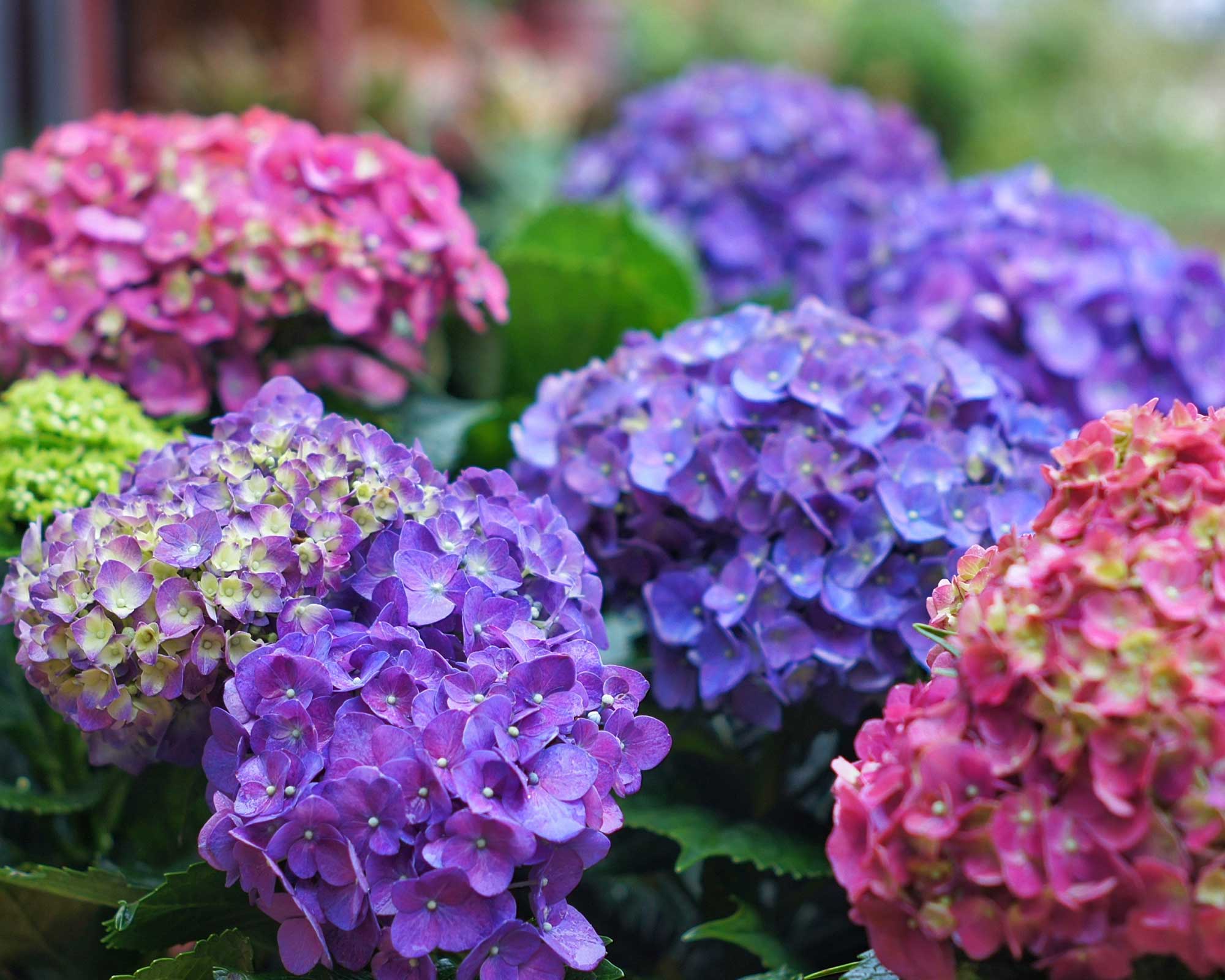
If your soil has areas with varying acidity, you may get different colored flowers on the same hydrangea plant
Can you change the color of white hydrangeas?
Hydrangeas with green or white flowers are increasingly popular nowadays, working well in both modern and romantic, cottage-garden schemes. But, unlike the blue and pink varieties, these types can not have their color changed as they are unaffected by soil pH.
Some will, however, turn slightly pink as they age, says John.
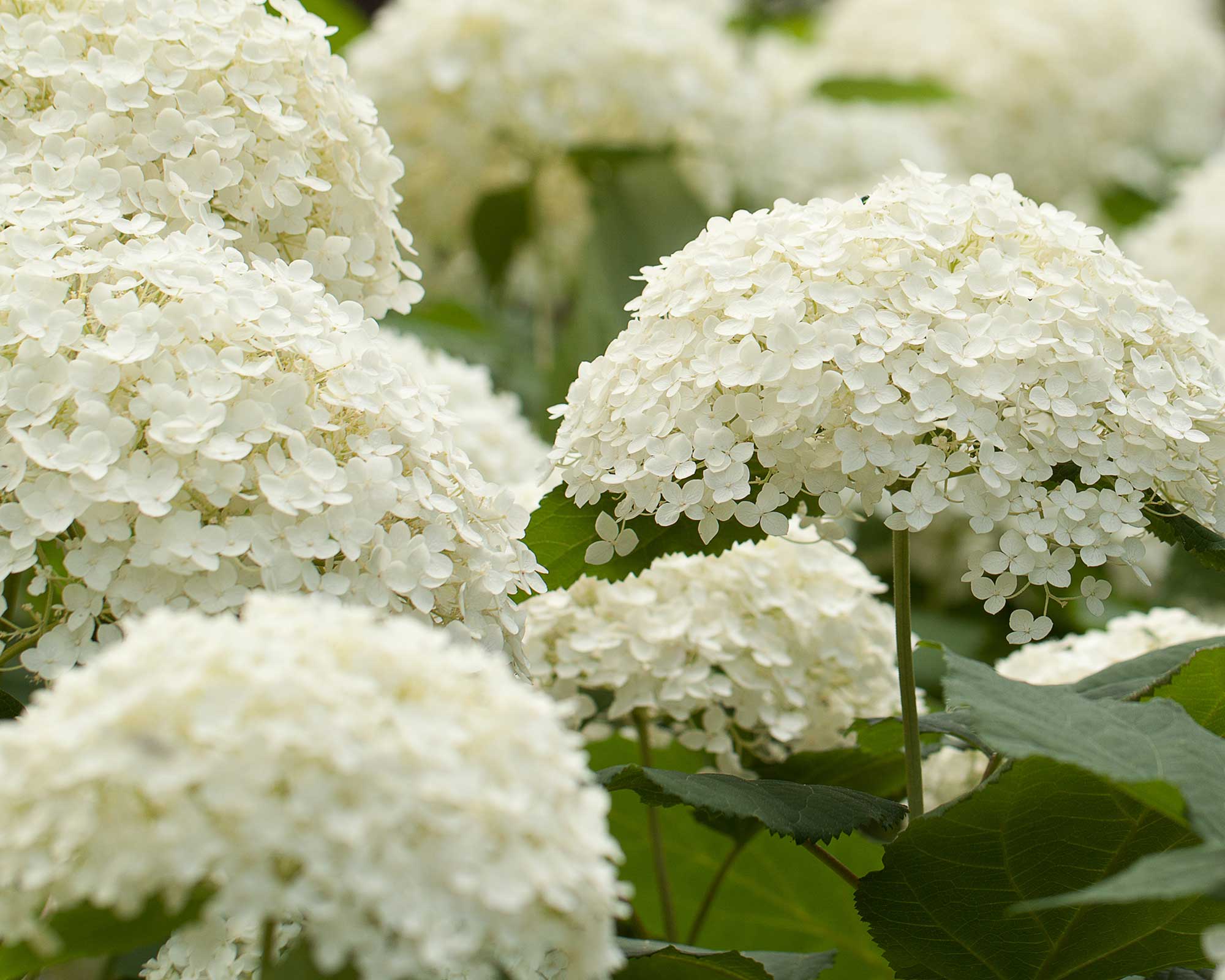
White varieties of hydrangeas are unaffected by soil pH

The garden was always a big part of Holly's life growing up, as was the surrounding New Forest where she lived. Her appreciation for the great outdoors has only grown since then. She's been an allotment keeper, a professional gardener, and a botanical illustrator – plants are her passion.
